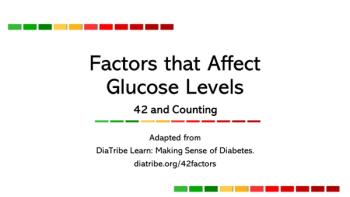
A Quick Guide to Exercise as Acute Therapy
Low back pain affects up to 80% ofAmericans at some point in their lives.1This common ailment can be mentallyand physically debilitating.
Low back pain affects up to 80% ofAmericans at some point in their lives.1This common ailment can be mentallyand physically debilitating.The cause is often difficult to determine,and precipitating factors varywidely. Back pain can result fromwork-related activities, weekend athletics,improper lifting, motor vehicleaccidents, and activities of daily living.Although the anatomic location of thepain generator is often unclear, degenerativedisk disease, strains (muscularinjuries), sprains (ligamentousinjuries), and osteoarthritis are frequentlyimplicated.2,3The treatment options for lowback pain are numerous. They includevarious medications (anti-inflammatories,muscle relaxants, analgesics, antiantidepressantsthat affect nerve transmission,and others), activity alteration(such as short-term bed rest), physicaltherapy (eg, passive therapies, stretchingand suppleness activities, and activationexercises), manipulative therapy,acupuncture/acupressure, andoccasionally--although rarely in theacute stage--surgery.Here, we present a rationale forexercise as acute therapy for low backpain; we also offer guidance in the selectionof specific exercises for yourpatient. In a second article, beginningon page 357 of this issue, we will discusshow exercise can prevent recurrenceof low back pain.WHY EXERCISE?The Agency for Health Care Policyand Research reviewed many therapiesfor low back pain and assessed their effectivenessbased on a meta-analysis ofthe available literature. They found littlescientific basis for the majority of treatments.1 This lack of supporting evidenceis due in part to the fact that 60%of patients with back pain improve within1 week and 90% improve within 6weeks.4 Because most patients improveregardless of the treatment employed, itis difficult to evaluate therapies.The optimal therapy for a particularpatient is often not easy to determine--nor is it strictly diagnosisdependent.Still, we have a responsibilityto provide effective care that hassome scientific validity. We also needto work with patients to create a rehabilitationprocess that they are involvedin and that makes them re-sponsible for their own improvement.Considered in this context, exercise isan attractive option for improving functionand decreasing pain in patientswith low back pain.1,5 It also encouragesindependence from medicationsand health care providers.The drawback is that it is difficultto convince a patient to exercise--because of time constraints,lack of energy or motivation, and/orpain. Injured patients may fear thatexcessive movement and impact willcause more pain and hinder recovery.To be motivated to participate inexercise and the healing process ingeneral, patients must have a sufficientdesire to get better. Your role is first tohelp patients understand that exercisecan be a key factor in their rehabilitation--and then to prescribe a regimenthat facilitates their recovery.TYPES OF EXERCISEA variety of exercises--includingstretching, strengthening, and cardiovascularactivities--can ameliorate lowback pain and expedite the return tonormal functioning.5-7 There are severalschools of thought as to what typesof exercise are most appropriate forrehabilitation of the lumbar spine.Some are flexion-based8; others (suchas the McKenzie approach) are extension-based or allow for individual variability,2,3 while still others emphasizerotatory movements.9Flexion-based. Exercises of thistype, by flexing the spine, take thepressure off the disk and nerves (thelatter is especially helpful if leg pain ispresent) and help decompress thelumbar region. The knees-to-cheststretch is an example of a flexionbasedexercise (Figure 1). Another exampleis sitting in a chair and leaningforward to touch one's toes. Thisstretch/exercise allows for lengtheningof the lumbar paraspinals and decompressionof the disks.Extension-based. The theory behindextension-based exercise is thatlying flat on one's abdomen makes itpossible for a disk to move anteriorlyas the posterior parts of the vertebraeclose down on each other and pushthe disk forward--similar to squeezinga tube of toothpaste. It is also believedthat this position allows overstretchedmuscles in the lumbar spineto heal.2,3 The prone extension is an exampleof an extension-based exercise(Figure 2).Many low back pain treatmentregimens are based on the McKenzieapproach. At the heart of this approachis the belief that low back painis best remedied by "centralizing" thepain to the patient's lumbar spine--primarily through lumbar extension.10To centralize pain means to move itfrom the legs or buttocks to theback.2,3 The goal is to try to move thenucleus of the disk within the diskspace with appropriate exercises andmaneuvers in order to lessen thepressure between the disk and the adjacentnerve. As the pressure on thenerve is reduced, the pain centralizesto the back. Although "McKenzie" isoften thought to be synonymous with"extension," this approach actuallyvaries with the patient and the causeof the symptoms, and can includeflexion-based as well as extensionbasedexercises.Rotation. The multifidi musclesare the main stabilizers of the lumbarspine. They are positioned at anoblique angle to the spine and allowfor rotatory movements. When a personhas been injured, these musclestend to atrophy because of lack ofmovement. Rotation exercises, such asthe back rotation (Figure 3), are designedto exercise the multifidi musclesin particular. Rotatory movements,in addition to flexion and extensionexercises, are important inregaining full and functional range ofmotion.9DESIGNING AN EFFECTIVEEXERCISE PLANThe type of rehabilitation that ismost appropriate for your patient dependson the results of the physical examination--and on the history (Box).Listening to the patient is crucial. Afteryou make the diagnosis--and often itmay be no more precise than "lowback pain"--it is important to ask 2key questions:
- "What positions are the mostcomfortable for you since your painstarted?"
- "What do you do to ease the pain?"
The answers to these questionscan help you determine what movementsto avoid (those that are likely toincrease pain and thus decrease thepatient's willingness to participate infurther exercise) and which ones tofocus on (those that the patient findshelpful and comfortable). For example,if a patient is comfortable lying onhis or her back with his legs up on apillow, flexion-based exercises aremost appropriate for him. However, ifa patient is most comfortable lying onhis abdomen, extension-based exercisesare preferable.If you do not wish to prescribespecific therapeutic exercises or assessthe benefits of various types of exercise,you can provide a more openendedprescription (eg, "evaluate andtreat") to a physical therapist.
References:
REFERENCES:
1.
Clinical Practice Guideline Number 14: AcuteLow Back Problems in Adults. Washington, DC: USDept of Health and Human Services; December1994. Publication 95-0642.
2.
McKenzie R. Mechanical Diagnosis and Therapy.New Zealand: The McKenzie Institute InternationalHeadquarters; 2000.
3.
McKenzie R. Treat Your Own Back. 7th ed. NewZealand: Spinal Publications; 2000.
4.
Weinstein JN, Gordon SL, eds. Low Back Pain: AScientific and Clinical Overview. Rosemont, Ill: AmericanAcademy of Orthopaedic Surgeons. 1996:330.
5.
Abenhaim L, Rossignol M, Valat J, et al. The roleof activity in the therapeutic management of backpain: report of the International Paris Task Force onBack Pain. Spine. 2000;15(suppl 4):1S-33S.
6.
Swezey R. Spine update exercise for osteoporosis-is walking enough? Spine. 1996;23:2809-2813.
7.
McCune D, Sprague R. Exercise for low backpain. In: Basmajian JV, Wolf SL, eds. Therapeutic Exercise.5th ed. Baltimore: Williams & Wilkins; 1990:299-308.
8.
Weinstein JN, Gordon SL, eds. Low Back Pain: AScientific and Clinical Overview. Rosemont, Ill: AmericanAcademy of Orthopaedic Surgeons; 1996:438.
9.
Grimsby O. Evaluation Methods, Soft Tissue Work,Mobilization and Exercises. San Diego: Ola GrimsbyInstitute; 2000.
10.
Bagnall D, Gray G. Functional rehabilitation forlow back pain: functional restoration and the lowerextremity functional profile. SpineLine. 2001;2:5-10.
Newsletter
Enhance your clinical practice with the Patient Care newsletter, offering the latest evidence-based guidelines, diagnostic insights, and treatment strategies for primary care physicians.

































































































































































































































































































